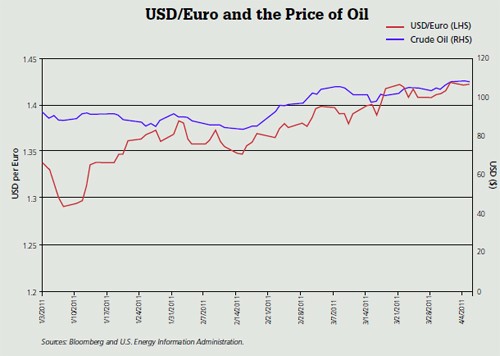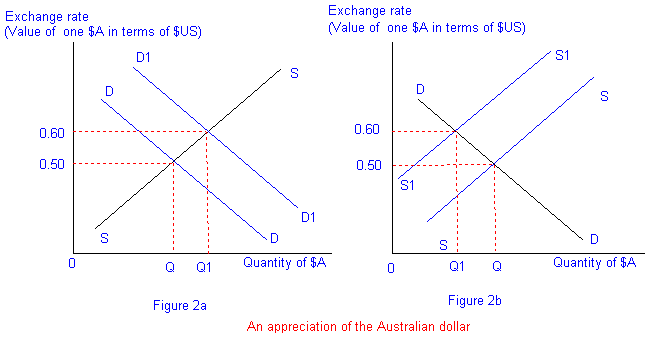Currency Exchange Floating Rate V Rate_4
Post on: 20 Апрель, 2015 No Comment

by ExchnageRateCalculator on May 10, 2011
The foreign exchange or forex market where currency is bought and sold is the worlds largest market—bar none. Each day over $3 trillion in currency is traded, far outstripping any other commodity or any other market. How much currency is worth when compared to another currency is called an exchange rate. and there are two currency-exchange rate methods—fixed rates and floating rates, and they have two very different focuses.
Exchange Rates Explained
Not only can goods be bought and sold in various currencies, currencies themselves can be traded in the commodities markets. The value of once currency when converted into another currency is called the exchange rate between those currencies. The exchange rate determines how much of one currency can be purchased by another currencys value.
Historical Perspective
With few exceptions, most national currencies were stapled against the value of gold, a process called maintaining the gold standard. During the late 1890s, during WWI, the Great Depression and WWII, US and most European currencies were temporarily removed from the gold standard.
After WWII at a global conference in Bretton Woods, the majority of the worlds currencies returned to the gold standard at fixed-to-gold-value prices. The United States dollar (USD) became the base currency in exchange rates at Bretton Woods. If gold was priced at $34.00 US per ounce, other currencies exchange with the USD according to how much it cost to purchase an ounce of gold. If the AUD purchased an ounce of gold at $45 per ounce, the AUD would exchange to USD at 45-34 or 1.32:1. $1.32 AU would purchase one US dollar.
However, in 1971, the Unites States left the gold standard once and for all, and the Bretton Woods currency exchange system collapsed. Since that time, the majority of the worlds currency has been fiat currency—backed by no commoditys value—and as only legal tender or valid forms of payment of debt.
No country has attempted to base its currency on a commodity value since 1985.Currency exchange rates from that point on have oscillated almost randomly, based on conjecture, subjective interpretation of events and even national credit ratings—the ability of a nation to pay debt.
Advantages of Anchored or Pegged Currency
Part of the reason for the often-changing currency valuations is rooted in the lack of a base anchor or peg. That reliable, anchored reference base lends stability and confidence. Without it, investment in not only the currency but in its originating economy is riskier.
Anchored or pegged currencies can be less susceptible to inflation: Currency that is not backed by a peg cannot be printed. The price of the base peg can change, but the currency valuation attached to it can easily be tracked right along with it.
Disadvantage of Pegged Currency
Maintaining fixed rates can have dangerous and long-term detrimental effects to a country and its currency. When the value of the currency falls too far, the country must use its reserve funds to purchase its own currency. Short-term investments happen every day, but maintaining that fixed rate over the long term can cause economies to fail.
Mexico experienced one such period in 1995, as did Russia in 1997. The Asian markets experienced a similar run on currencies in 1997 as well.
When countries are unable to maintain the fixed exchange rates, investors and traders try to rid themselves of that currency before it loses value in trade. Mexico was forced to reduce the pesos value by 30 percent. Thailand devalued its bhat by 50 percent in 1997 as a result of another exchange failure.
As with most investment venues, perception influences investment division. A currency peg lends that impression of stability—perceived value is real value. Most currencies who attempted in the late stages to peg their currencies to a real commodity needed that impression boost: Investors started viewing those countries who needed that currency anchor as having unrefined capital markets and weak regulation.
Fixed Rates

Each countrys central national bank determines the currencys value each day. The country then ensures it has enough of its own currency and currency of other foundation countries currency held in reserve to adjust currency circulation needs to maintain the fixed value.
When currency values appear to be falling, it absorbs or buys back its currency to maintain trading demand. When currency values appear to be rising, it releases currency for purchase on the commodities market to take lower the value against other held reserve currency.
It also ensures it has enough currency on hand to honour an exchange demand. For instance, if the AUD exchanges against the Japanese yen at 87 yen for one AUD, the central bank must have enough reserve currency to hold its capital reserve responsibility and have enough to honour that exchange. If the AUD exchanges for $1.71 US, the Australian central bank must have enough reserve currency to honour that exchange on the commodities market, as well.
The fixed rate or daily rate the central bank sets causes the central bank to buy or sell its currency to maintain that base exchange rate as closely as possible.
Floating Rate
Determined by supply and demand by currency traders on the forex market, currency pair comparisons and valuations change constantly. At noon, one AUD could exchange for one USD. The AUD could exchange at three oclock for $1.25 US and at four oclock for only $0.75 US.
Floating exchange rates fluctuate for a myriad of reasons and affect what currency is bought and what currency is sold from moment to moment. Mis-timing a currency trade or misjudging a margin call can spell financial disaster. Well-timed trades, however, can make fortunes.
Central banks must at times insert their influence in floating exchange rate situations to prevent sliding exchange rates, purchasing its own currency to reduce market availability and assure investors of the currencys stability.
Effects on Businesses
When businesses need foreign currency for a business transaction, obtaining the best exchange rate leads to higher profits. Needing the foreign currency at a time of unfavourable exchange rates can lead to higher expenses, often trickled down to the consumer with higher prices.














